#Siemens Mobility
Text
Yellow Window Designs Interior for Rennes Ville et Métropole Metro
Yellow Window Designs Interior for Rennes Ville et Métropole Metro
Yellow Window is delighted to have worked with Siemens Mobility on the interior design of Rennes Ville et Métropole city’s latest metro line.
Metro line B entered service last week, contributing to the city’s strong commitment to mobility in the Rennes metropolitan area.
The whole design team hopes their work will provide a swift and comfortable transportation offer to the people travelling on…
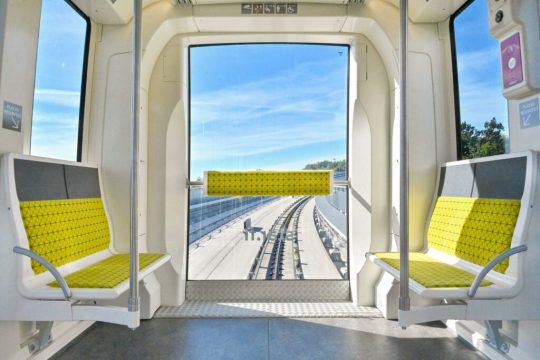
View On WordPress
#bi#design#ICE#Interiors#IT#Lightweight Train Design#Metro#News#NS#People#RAI#Railway Interiors#RTA#siemens#Siemens Mobility#Spor#Supplier News
3 notes
·
View notes
Text
Kiwirail orders up to 257 Siemens' Vectron range of electric and diesel-electric locomotives from Munich, Germany. These locomotives will be classified as VF class, with subclasses, VFO (AC single phase versions), VFA (AC/DC/MS multi-system versions) and VFD (dual mode versions, fitted with a diesel generator), and will operate both for freight and passenger services, mainly in the South Island.
0 notes
Text





Siemens ME45 (2001)
#2001#2000s#01#00s#cellphone#cybercore#cyber y2k#design#kaybug#mobile#old tech#phones#photos#siemens me45#siemens#tech#technology#y2kcore#y2kore#y2k aesthetic#y2k core#y2k cyber#y2k design#y2k
39 notes
·
View notes
Text



Siemens Gigaset Eco Visions Leaf Concept Phone by Formwelt Studio (2008)
#3d#2008#2000s#08#00s#art#cellphone#cgi#concept art#concept#design#ecofriendly#formwelt studio#frutiger aero#frutiger eco#graphic design#green#mobile#phone#siemens#tech#technology#white
84 notes
·
View notes
Text


xelibri - 1 (2003), described at launch as a ”Retro-Futuristic Classic”. the president of the company once stated that he envisaged “a scenario where people will own many fashion accessory phones and wear the one that matches their mood, the occasion, or their attire”.
49 notes
·
View notes
Video
Xelibri: Beauty for Sale by David Fincher (2003)
5 notes
·
View notes
Video
youtube
Digitaal Tekenen op een Wacom Cintiq met Corel Painter 2023 - Deel 1: Ho...
#youtube#painter#wacom cintiq#automotive design#transportation design#Corel painter#mobility design#design sketch#concept#concept art#conceptual design#Train#High speed train#bombardier#alstom#siemens#nederlandse spoorwegen#sustainable
0 notes
Text
Op-ed: Finally high speed? Egypt’s Long awaited HSR Line 1.
One of the most important projects in Egypt to date, albeit requiring (some) urgent extensions to fulfill its potential.
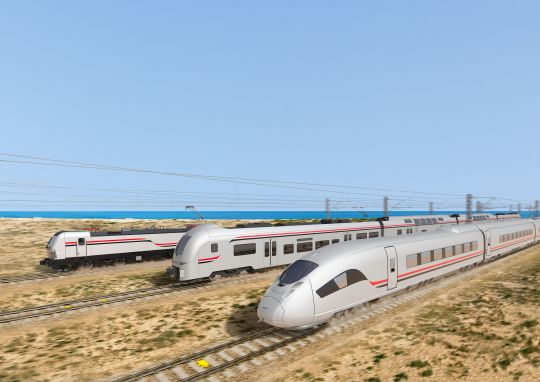
Picture 1: Rendering of the new HSR trains from Siemens press relase, date 28th of May 2022. (Source: Siemens)
An important disclaimer needs to be made: the analysis made here is arm–chair planning. While I am confident enough to publish this piece, this is neither a report nor is it academic. However, I think it is important to raise questions and put forward policy proposals to help make good transit even better. Also any sources used will be either hyperlinked or attached as a PDF.
Egypt’s High-Speed Railway projects provide genuine reasons for optimism. This opinion piece focuses on the High-Speed Railway (HSR) Line 1, which will run from Marsa Matrouh to Ain Sokhna, via West Alexandria and Greater Cairo.
According to the National Authority for Tunnels (NAT), the national agency responsible for the construction of HSR 1, along with Siemens Egypt, the high-speed “express“ trains which will consist of Valero trainsets (akin to Germany’s ICE trains) will reach a top speed of ca. 230 km/h. The “regional” trains will be based on Desiro trainsets (which are akin to Germany’s Regiobahn/ regional trains), which will run at a top speed of ca. 160 km/h.
For reference, the Cairo-Alexandria railway corridor is ca. 200 km. Due to the current conditions of the legacy railway mainline (run by Egypt National Railways - ENR) and factoring in the other stops in between, the train ride between Cairo and Alexandria takes around 3 hours. For other express trains on the line, such as the new Talgo trains, that journey could take up to 2 hours and 30 minutes. The Talgo trains have a top speed of 160 km/h but due to the stops and the conditions of some of the railway segment, the average speed is 80 km/h.
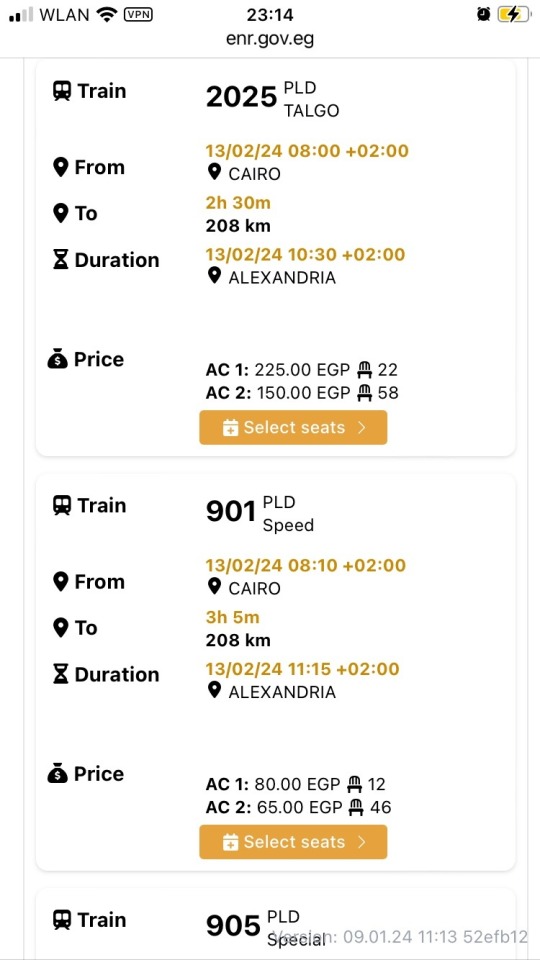
Picture 2: Screenshot showing the average time and distance between Cairo and Alexandria. Notice duratiom difference between Train 2025 (a Talgo train) and 901 a regular “speed” train (Source: ENR official booking website).
With HSR 1, there will be an alternative train route from Cairo to Alexandria (via the area adjacent to the Cairo-Alex Desert Road) that runs on dedicated high speed railway tracks, and will connect Cairo to the North Coast area; the latter only serviced at the moment by a low-frequency legacy single track that runs from Alexandria to Marsa Matrouh. The railway line as it is currently planned, is already going to be a great addition to the Egyptian transport network.
However, some issues can hinder achieving the potential this HSR line has for commuters and travelers alike. Those issues include the distance between the Cairo HSR stations and the nearest urban agglemoration or metro station. Also, many missed opportunities to connect important facilities and areas within the vincinity of the new HSR. Implementing solutions to close these gaps will be a change changer for sustainable mobility in Egypt and would be a good step forward in encouraging the transition to sustainable mobility across the Middle East and North Africa.
What is HSR 1?
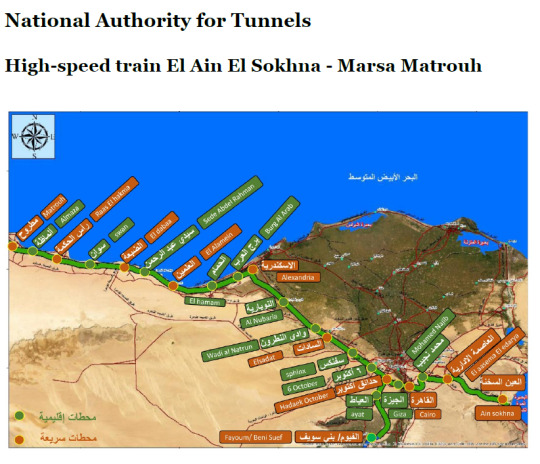
Picture 3: An official map of the HSR Line 1. Stations in green are designated as “Regional” and those in orange are “Express” stations. (Source: National Authority of Tunnels (NAT), Egypt)
The Line begins from Marsa Matrouh on the western end of Egypt’s Mediterranean North Coast, passing by the North Coast towns and cities until Alexandria, then heading to the Greater Cairo Region, passing by the further most western parts of the Nile Delta, before it crosses over the Nile, encircling Giza and Cairo proper, then passes by the outermost outskirts of New Cairo and the New Capital, before terminating at Ain Sokhna on Egypt’s Red Sea. It is, so far, the only direct true RED2MED (Red Sea to Mediterranean Sea) rail link in existence. In addition, there is a planned short link to the Fayoum, south of Giza.
Here is a list of the railway stations along the line:
Legend:
LRT: Light Rail Transit
NAC: New Administrative Capital
HSR: High-Speed Rail
→: Branch off the mainline.
Express: Serviced mainly by Valero trainsets.
Regional: Serviced mainly by Desiro trainsets.
Table 1: A list of the stations and their planned intermodality. (Source: Own work)
One of the issues noticed, from analyzing the information provided online and in the media, and by having a look at Google Earth's latest imagery, one finds that the moment the railway bends away from the North Coast towards Greater Cairo, we start seeing missing connections and gaps.
Below is a breakdown of the issues that I believe are a hinderance to achieving a higher future revenue and utilization of the HSR line 1.
Borg ElArab Int. Airport: passing by but not stopping?

Picture 4: Borg ElArab airport, the only civilian airport that currently serves Alexandria and Borg ElArab area. It also is popular with budget airline travelers, including those heading to Giza and Cairo. (Source: felekmaster, wikimedia).
That didn’t matter much as the railway service on the legacy route served the rural hinterland of the North Coast, and the capacity of the legacy rails there prevented increasing services that could have been useful to the airport.
The North coast section of HSR 1 goes parallel to the legacy railway line from Marsa Matrouh until the town of Borg ElArab, after which it diverges into two sections: a section going to Alexandria in the East, and a section that is the continuation of the main HSR line heading southeast. It disturbingly passes by the Airport perimeter, on both its North and East sides, without having a single station or set of tracks heading to the Passenger Terminal.
This will prove crucial in the future, as Borg ElArab airport is set to expand even further and a second passenger terminal, leading to increased traffic in the area.
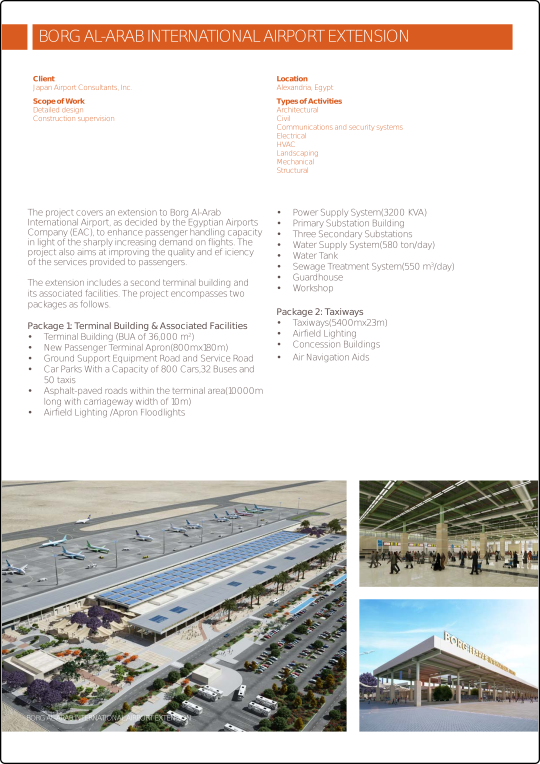
Picture 5: Brochure by Japan Airport Consultants, retrieved from the Engineering Consultants Group SA’s website , detailing the planned expansion of Borg ElArab Airport and Terminal 2’s capacity. (Source: ECGSA.com)
Sadat City station: a tad out of reach?
The station dedicated to Sadat City, a sprawling new town northwest of Cairo, is not directly adjacent to any of the city’s main districts or even close to the city limits. This issue could have been prevented had the station’s location moved around 2 km North West, where it would have been at a nearer location to the city limits. Just moving the station 2 km in that direction makes it easier for those commuting to and from Sadat City to access the HSR line.

Picture 6: Sadat city HSR is ca. 2 km, as the crow flies, from the city limits (shown on maps as dotted red line) of the city it aims to serve. (Source: Google Maps)
Sphinx Airport and Smart Village: why not?
Between Sphinx and 6th of October city, there is a wide gap without a railway station (neither express nor regional) despite the HSR 1 mainline passing by yet not serving Sphinx International Airport (Cairo’s 2nd International airport), Smart Village (a business park with many financial and telecommunications corporations) and AbuRawash Industrial area.
6th of October City: an oversight in need of correcting!
Despite its importance as a major inter-modal node with the Monorail West line, and being in the heart of a major metropolitan area like 6th of October city, it’s currently designated as a “Regional” only station. This obviously needs to change.
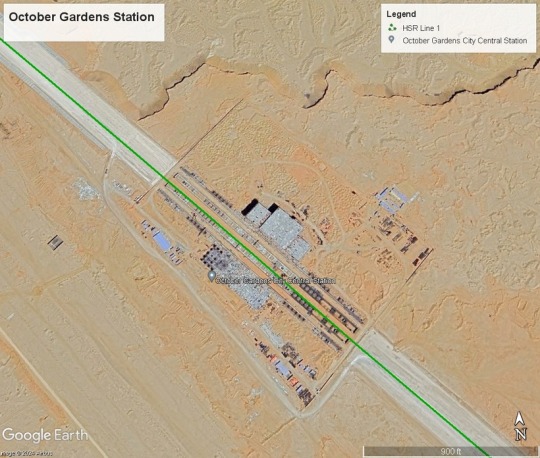
Picture 8: Screenshot of the October Gardens station from Google Earth (Source: Own work using Google Earth)
Although the nearby station “October Gardens/Hadayek October” is planned to be an intermodal station for lines 1 and 2, it is far more logical and far more efficient and revenue minded to either designate the 6th of October station as the intermodal station between HSR 1 and 2, since the area around the station is already built up and central to the 6th of October city. Also, the Monorail West line station is nearby, therefore connecting to other parts of 6th of October city and Giza.

Picture 9: Screenshot of the 6th of October station from Google Earth (Source: Own work using Google Earth)
South Giza: Blocked path?
The new South Giza HSR station is being built on the path of the former railway curve leading from the ENR mainline to the Wahat line. Instead of keeping the railway curve and utilizing it within the station as a potential for quick platform change station, and possibly a cheaper way to connect the HSR to the mainline in the future, the tracks were removed, and station was built atop it.

Picture 10: Screenshot of the South Giza area before the start of the HSR construction works, from Google Earth (Source: Own work using Google Earth)

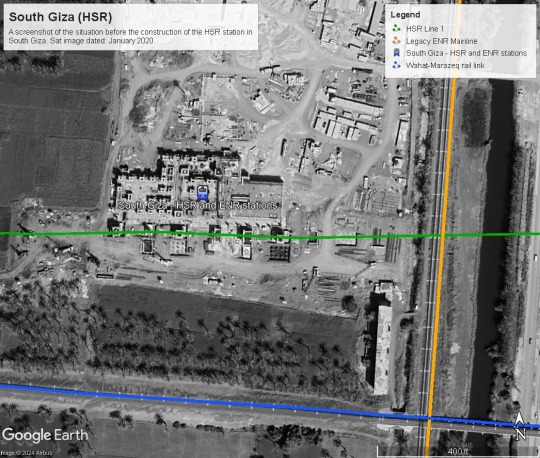
Pictures 11 and 12: Screenshot of the South Giza new HSR and ENR multimodal station. See how a new railway station is being built atop the now demolished Giza-Wahat railway curve. (Source: Own work using Google Earth)
South Cairo/Helwan HSR: A bit far?
Despite being the only HSR station that is within the city limits of Cairo proper, it is by far the farthest station of all to central Cairo. It will be a great service to the residents of Helwan, of course, and that is a positive aspect. However, the Helwan Metro station is a Kopf Bahnhof/ Terminus station, meaning an expansion of the line 1 metro to meet the new railway will be unfortunately out of the question in the foreseeable future.
The closeness of the often overlooked Marazeq bridge, on the other hand, might come to the HSR’s rescue.
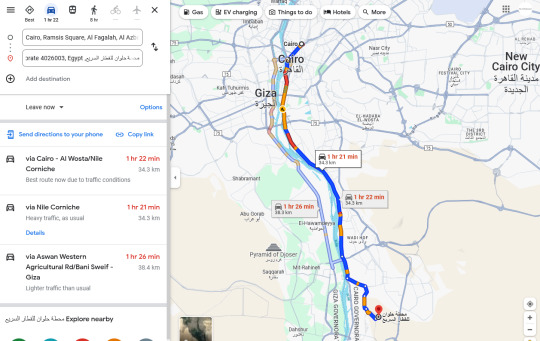

Pictures 13 and 14: Screenshots from Google Maps, with live traffic view, showing how long it would take to travel from Downtown Cairo to the Helwan HSR on an average weekday at 6:15 pm Cairo time (06/02/2024). (Source: Google Maps).

Picture 15: Screenshot of the Helwan Metro terminal station from Google Earth (Source: Google Earth).

Picture 16: Screenshot of Google Maps, with live traffic view, showing how long it would take to travel from the nearest metro station (Helwan) to the new HSR station in South Helwan, on an average weekday at 6:30 pm Cairo time (06/02/2024). (Source: Google Maps).
Mohamed Nagiub's New Cairo station: not even close.
This HSR station is supposed to serve New Cairo and is named after one of its main avenues (Mohamed Nagiub axis). The station lies 9 km south of the current southern limits of New Cairo city. The area around the station definitely has potential for transit-oriented development/ small rail town, being in the desert and not surrounded by any other development or agricultural works except by a powerline and a highway.

Picture 17: Screenshot of Google Earth’s ruler feature to measure the road path from the new Mohamed Nagiub HSR station to the nearest ‘edge’ of New Cairo. The distance from the station to the nearest New Cairo proper residential area is ca. 9 km. Marakez is closer but is still some 6 km away from the station. (Source: Google Earth)

Picture 18: Screenshot from Google Earth showing the new Mohamed Nagiub HSR station being constructed and its surroundings. Sat image dated 5/4/2023. (Source: Google Earth)
What can be done to fix HSR Line 1?

Picture 19: Can Egypt’s future Express trains be as successful and popular as its German ICE counterpart? The door is open to make that happen now, while construction works are still underway.
(Source: Flickr.d5e via Wikimedia Commons, CC4.0 license. Photo description: Center coach with open door of Deutsche Bahn, BR 412 ICE 4 train, heading to Frankfurt Main, Süd, taken in Berlin Ostbahnhof)
1-: Changing the designation of certain stations to "Express railway"
Starting from the cheapest of interventions to fix the HSR 1, the following stations need to be immediately designated as dual-use stations (both express and regional trains) or as half-express (fewer Express trains/more regional trains): Burg AlARab/Borg ElArab, 6th of October City, South Giza, Mohamed Nagiub.
Cost: Zero.
How:
A schedule that differentiates between Sprinter trains that don’t stop at smaller stations. The remaining Express trains can stop at an alternate set of stations. Hence, keeping the number of extra stops low and the duration of the journey manageable. eg. Sprinter trains to stop only at the main Express station. Then have the configuration of trains, that stop either at all express stations, then stop at 6th of October city, then Mohamed Nagiub. The alternating configuration could then stop at express stations, plus Borg ElArab, and South Giza.
Even though these regional stations are not getting full express train service, having at least these alternating services will make it easier for folks to plan their commutes around express trains if they need to, and use the regional trains if they want to spontaneously or to travel a few stations up or down the line.
Tip: DB already does this on many of its routes in Germany.
2- Closing the HSR and ENR gap: ENR Legacy - HSR link via Marazeq bridge
Build 1 km of new rails from West of South Cairo station to the Marazeek cargo line, repair and increase the efficiency of 6.85 km of existing railway. This includes the cargo route and the Marazeek bridge (the 2nd railway bridge in the North of Cairo, but lesser known and forgotten except by Egyptian railfans like myself).
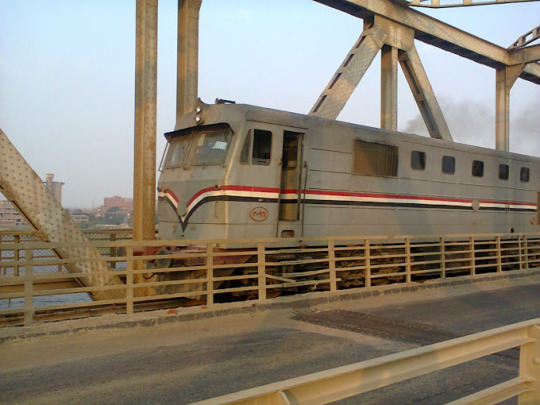
Picture 20: A photo, dated sometime in 2020, of a Henschel 3096 Diesel ENR Locomotive, going over the Marazeek Bridge. Al Marazeek bridge is a multimodal bridge (single railway track, 2 lane roadway and a pedestrian path). (Source: User “Na Na” - Google Maps)
From here we have two solutions:
2-a- least cost possible: Run Bi-mode EDMUs (like the British Rail Class 802). These trains can run on both diesel and electrical overhead wires. This would be crucial to help bridge the gap between the ENR and HSR: The class 802 can run on diesel from Cairo Central station in Ramsis Square all the way to the South Cairo/Helwan station, then switch to the electrical overhead power supply on the rest of its journey along the HSR.
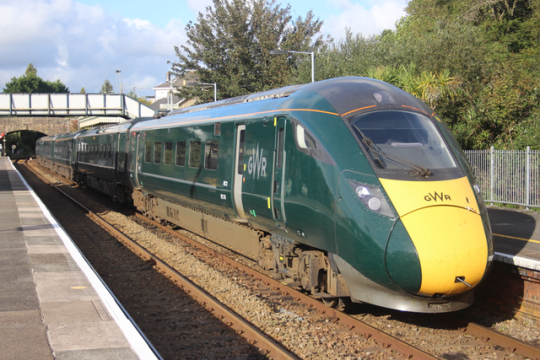
Picture 21: The British Rail Class 802 Trainset, a Bi-mode EDMU trainset manufactured by Hitaschi, operated by the Great Western Railway of the UK. These trains can run on both diesel and when available, use an overhead electric powerline. (Source: Superalbs via Wikimedia Commons, CC4.0 License)
Using bi-mode trains will allow for these routes to be possible:
Cairo central to West Alex
Cairo central to North Coast and Matrouh
Cairo central to New Cairo (see solution 3)
Cairo Central to the New Capital
Cairo is central to Sphinx and Borg ElArab Airports (see solution 3)
Cairo central to Ain Sokhna

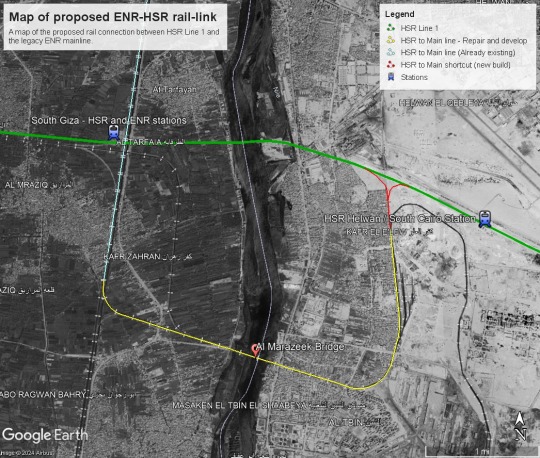

Pictures 22, 23, and 24: Maps of proposed ENR-HSR Rail-link in the Greater Cairo region (Source: Own work using Google Earth).
2-b- the future-proof yet costlier option: electrify the gap from South Cairo/Helwan to Cairo central station. This would guarantee that all of the HSR trains can enter Central Cairo and would not require the Rail Class 802 units.
How did I calculate the costs:
It’s not entirely clear how much 1 km of electrified rail costs in Egypt. However, the entire 660 km of rails, signaling systems, compensations paid, stations and the train sets cost about 4.5 billion euros.
Now if we make the very prejudiced assumption - based on the study “Economic investigation for building a high-speed rail in developing countries: The case of Egypt” by Belal et. al 2020 - that the actual Infrastructure (rails and overhead wiring etc) costs only 15% of the 4.5 billion, that means, (4.5 billion € /660 km+all stations and facilities)*0.15= 1 million € per km of rails and overhead wires.
Also, assuming that the rehabilitation of existing railways costs a third of placing a completely new set of tracks, that means rehabilitation of rails costs 333 thousand euros per km. Let’s assume that the electrification costs of existing rails costs also 333 k.
Cost of 2-A plan:
1 km of new rails: 1 million euros
7 km of rehabilitation of the existing tracks: 330 thousand x 7 km = 2.3 million Euros
Total: 3.3 million euros
Percentage of this plan to the main project expenses: 0.07 percent of the total project cost (i.e. peanuts!).
Cost of 2-B plan:
1 km of new rails: 700 thousand euros
7 km of rehabilitation of the existing tracks: 300 thousand x 7 km = 2.1 million Euros
Total: 2.8 million euros
Percentage of this plan to the main project expenses: 0.06 percent of the total project cost (i.e. peanuts!).
Cost of 2-B plan:
1 km of new rails: 700 thousand euros
7 km of rehabilitation and electrifying existing tracks: 666 thousand euros 00x 7 km = 4.6 million Euros
38 km of electrifying existing tracks (from Marazeek to Cairo Central) = 12.6 million Euros.
Total: 17.2 million euros
Percentage of this plan to the main project expenses: 0.38% of total project cost, (a bag of salted peanuts in comparison!).
My opinion on this: I think for the time being, and given the financial crisis, it is much better to resort to the EDMUs that are similar to the UK’s Great Western Rail Class 802. These were designed to run on British railways which are not only of similar age and design but were actually built by British Engineers in the 1880s. Instead of reinventing the wheel, we can simply adopt it as a literal stop-gap solution until we have more money to electrify the ENR legacy mainline.
Besides, a great chunk of the ENR network will not be electrified anytime soon. Therefore, if the section between South Cairo/Helwan and Central Cairo proves to be of popular demand and electrification then becomes due, these EDMU units can still be deployed on many other sections across Egypt’s rail network, including from Ain ElSokhna to Suez, bridging HSR and ENR networks from the Eastern end of the line.
3- Build slip paths and branch-offs
Several slip paths and branches need to be built urgently to connect crucial infrastructure and provide real accessible and intermodal transport.
3-a- Borg ElARab airport slip path and train station.


Pictures 24 and 25: Maps of proposed Borg ElArab Airport - HSR Line 1 Rail-link (Source: Own work using Google Earth).
This is an obvious slip path and absolutely necessary.
Cost:
6.5 km of new rails = 4.5 million euros
1 new station (Between T1 and the new T2 passenger buildings at Borg ElArab International Airport): 1 million euros
Total: 5.5 million euros.
3b- Sphinx Airport branch off
While Smart Village and Abu Rawash Industrial area are a tad too far for a slip path, a branch off may do the job (to connect the airport, and possibly a light rail from airport to Smart village and Abu Rawash in the future) with a main train terminus station adjacent to the Sphinx Airport passenger terminal. It would connect HSR 1 with Sphinx Airport and allow for this mix of routes to take place:
Sphinx Airport - Central Cairo
Sphinx Airport - Borg ElArab airport - this would put these airports on the map of the budget airline transit industry, with passengers changing between airports using the HSR Line 1.
Sphinx Airport - West Alex
Sphinx Airport - North Coast and Matrouh
Sphinx Airport - New Cairo
Sphinx Airport - New Capital
Sphinx Airport - Ain Sokhna
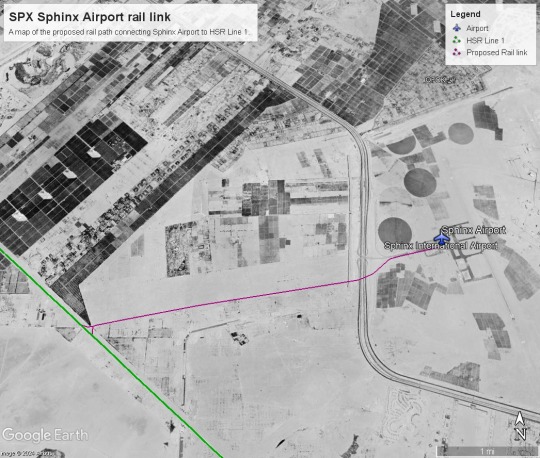

Pictures 26 and 27: Maps of proposed Sphinx Airport - HSR Line 1 Rail-link (Source: Own work using Google Earth).
4- New Cairo First mile/Last mile?
Given the massive distance of the station from the city, and the social and economic importance of New Cairo, the only long term solution is to connect the HSR to New Cairo and its passenger volume potential, is by a rail branch off.
However, some form of LRT or Sbahn-styletrain connecting the Mohamed Naguib station to New Cairo’s different districts can help establish the mobility demand at a lower budget, and that would financially support a future branch off into New Cairo.


Pictures 28 and 29: Maps of proposed Mohamed Nagiub to New Cairo ‘sbahn’ link / future HSR branch (Source: Own work using Google Earth).
This may be true at Ain ElSokhna too: Where an LRT or coastal suburban line can help connect the small towns and resorts along the shore to the station.
Conclusion
The logic of these suggestions and ideas proposed here revolves around 5 key concepts:
1- Accessiblity and Intermodality:
If we want as many people as possible to benefit from the service and pay for HSR (to cover the costs and make net revenue), we need to make it as accessible and intermodal as possible. You need to reduce the number of changes at important stops (such as airports, metro/monorail/major bus stations, and terminals) by having direct connections to them. A bus from the HSR station to the nearest airport or metro station just won’t cut it for many people. Also, people traveling with luggage do not want to change more than a handful of times if ever.
2- Prioritize service to Urban areas:
Major urban agglomerations must always have their own train stops, and depending on their location and Population size, they must also be served by all types of trains (express, regional, and suburban). People living in well-established urban areas are less likely to drive to a stop more than 2 km away from the urban core. This is especially the case if the total journey time on existing trains eventually adds up to the same journey time expected, leading to no savings in time or fuel/trip costs.
3- Encourage Transit oriented development:
Whenever possible, if we have a stop next to empty undeveloped land, we should encourage the building of transit-oriented developments. These will become very much-needed and sought-after Housing units and will make maximum use of the existing railway and its adjacent services.
4- Closing the gap between the legacy and HSR systems:
In places where there is a phased transition or the construction of new railway systems, there must be a goal to close the gap between the two systems by finding ways to integrate them. This is particularly true between the HSR and ENR systems. If they both become integrated, it increases the resiliency of both systems and will help with the electrification of all the non-HSR railways, making it easier to provide new route combinations and have fewer transfers and modal changes due to the gap between electrified and non-electrified train routes.
5- Stations aren’t the end of the journeys:
If a station is not within a dense urban agglomeration, LRT or suburban rail services can help connect the station with its neighboring towns or villages.
I would even argue that in the medium and long run, it is in the interest of Siemens and DB to build these extensions and branches. In their paper, Belal et. al (2020) included a very important piece of advice to DB and Siemens:
“There is no doubt that the passenger flow (PF) on HSR is a crucial factor shown on ticket revenue. It has a direct impact on the total income of the project. Therefore, it has a significant role in project feasibility.” (page 1006)
As people in Egypt start getting to know the HSR network, folks regularly traveling between Cairo and Alexandria, for example, may begin to prefer traveling via the HSR network, if they know that they can get on an express train in Cairo Central and get to Alexandria or Borg ElArab Airport in one go, and much faster than they were used to traveling on the legacy line, that would make the HSR network a game changer of mobility in Egypt; and perhaps also benefit DB on the long run too.
Links:
#cairo#high speed rail#egypt#siemens#deutsche bahn#mobility#trains#British Rail#german railway#alexandria#Marsa Matrouh#Ain Sokhna#Red2Med#red sea#mediterranean sea
1 note
·
View note
Text

In ASL and SSL, this is the gesture for "Inshallah," which means means "God willing"; it's used to express hope that a specific future event will come to pass.
🇵🇸 Things you can do below 🇵🇸
🍉 SHARE posts from Palestinians, especially journalists on the ground (copy link on IG works just as well as sharing?). They're literally dying for that footage 🙃 let's make sure it counts
🍉 DONATE an E-sim @connectinghumanity_ on IG
🍉 DONATE to @CareForGaza (Twitter; donation links should be on their profile too). A lot of donation drives are just... making a grab at clout but this one is legit; a number of Gazans confirm that the food/produce is getting to them. The organizer seems to be Palestinian and living there as well
🍉 BOYCOTT brands listed by @bdsnationalcommittee on IG
Official boycott targets: AXA, Puma, Carrefour, Siemens, Ahava, HP, Sodastream, any products from Israel
Organic boycott targets: Domino's, McDonald's, Burger King, Pizza Hut, Wix
🍉 PRESSURE your governments & officials to call for a ceasefire and #InvokeGenocideConvention at the ICJ (rootsaction.org)
🍉 PROTEST. If there are mobilizations in your area, show up to be part of the count. No heroics—do what you feel safe doing and listen to the organizers.
.
.
.
.
.
it was also important to me to include an Al-Qassam fighter in this, because they're often scapegoated by Western media, and also by well-meaning allies who say "but civilians are not Hamas"; there's this attempt to separate militant resistance from the process of liberation as a whole
Yeah, most civilians are not Hamas, but they don't denounce them either. Palestinians call them freedom fighters, protectors.
because the resistance is not a bunch of evil, violent outliers; they are as much victims of the occupation as the women, children, and non-combatants are. Most if not all of them were born under the occupation; a good percentage of them are also orphans.
I will never condemn boys who live along the coast but have never seen the sea.
.
.
.
.
.
And end to the violence can't mean a return to business as usual, where the occupation and apartheid continue and Palestinians are still getting displaced on their own land. it will still take decades to rebuild homes. priceless historical and cultural items & structures have been callously destroyed and can never be recovered. nearly all the children in gaza have been made disabled and traumatized and murdered—what kind of future will they inherit?
israel must be abolished. They, the US, Canada, and the EU, must pay
Inshallah, we will not stop at a ceasefire
Inshallah, we will see complete liberation for Palestine
#Palestine#from the river to the sea palestine will be free#free palestine#my art#artists for palestine#the bracelet on the toddler is also a reference to Plestia's cousin making them bracelets with their names#so their family could easily be identified if any of them ever died
12K notes
·
View notes
Text
Siemens Launches Comprehensive Private 5G Solution for the Industrial Sector
Siemens, a leading global technology company, has introduced a groundbreaking private 5G infrastructure, marking a significant advancement in mobile communication standards for the industrial sector. This development is set to revolutionize how industrial companies approach automation applications and connected production.
Innovative 5G InfrastructureSiemens has developed, for the first time, an…
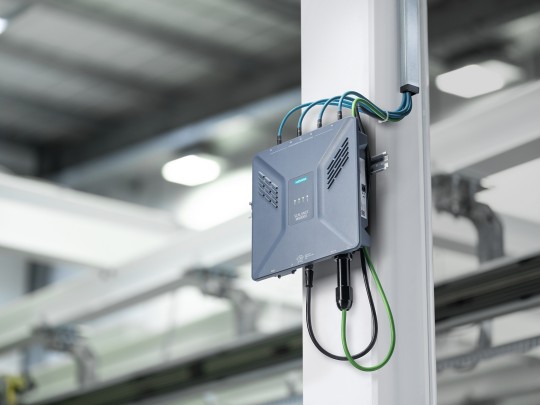
View On WordPress
#5G Network#Connected Production#connectivity#Customization#Data Control#digital transformation#Industrial Applications#Industrial Automation#Innovation#Mobile Communications#Private 5G Infrastructure#Radio Access Network#Salzgitter AG#Siemens#Siemens Digital Industries
0 notes
Text

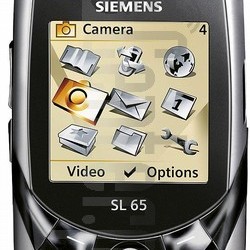
Siemens SL65 (2004)
source 1 source 2
#2004#2000s#04#00s#art#cellphones#design#graphic design#icons#mobile#phone#siemens#siemens sl65#tech#technology
0 notes
Text
First Passenger Trains Run to City of London with Digital Signalling
The first trains have carried passengers to the City of London using European Train Control System (ETCS) digital signalling.
This marks a significant milestone for the 1.4 billion GBP East Coast Digital Programme, which aims to make rail services more reliable and more sustainable through the implementation of digital signalling.
Project lead and qualified driver Oliver Turner joined the team…
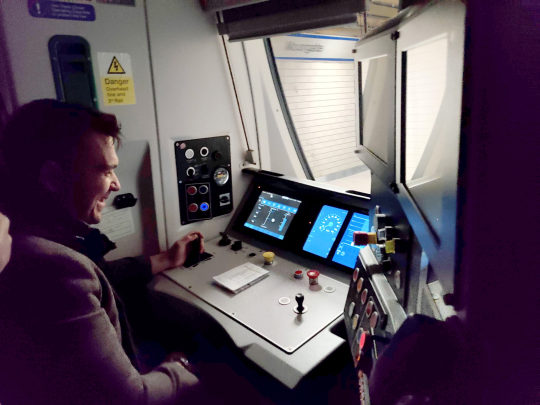
View On WordPress
#digitalisation#East Coast Main Line#ETCS#Govia Thameslink Railway#Network Rail#Railway Signalling#Science and Technology#Siemens Mobility#United Kingdom
0 notes
Text
2 new classes of electric locomotives for Kiwirail's fleet from Siemens.

Taurus / EuroSprinter range of electric locomotives for the North Island.
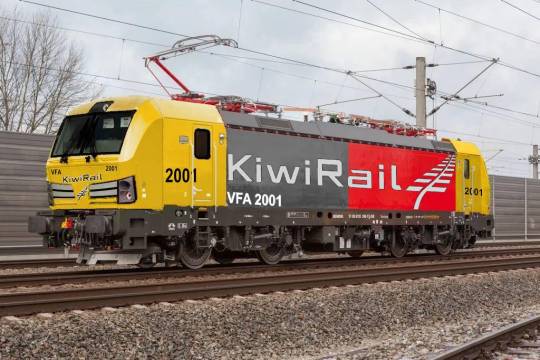
Vectron range for the South Island.
#railway#rail#railroad#train#electric locomotive#locomotive#kiwirail#siemens mobility#siemens trains#taurus#vectron#eurosprinter
0 notes
Text
What is Industrial Automation & How it Evolved
What is industrial Automation
Industrial Automation is a technique by which we make hand over human control to machines. In industrial automation machines are developed to accomplish the tasks which individuals accustomed to achieve. Why it is done? Because of its advantages:
Through Industrial automation we will do mass production with less manpower
Quality in the technique is increased
Safety of person & devices are increased
More accurate process control
Since human intervention is less so reliability in the system is higher
Systems operate is low power source, more electronic control so equipment our life is higher
Changes in process logic becomes easier since logics are changed mostly through software
Principal Industrial Automation MNCs
L & T • ALSTOM
Schneider • FESTO
Siemens • Fuji Electric
Allen Bradley • Toshiba
Messung • TATA Honeywell
Modicon • Omron
Mitsubishi • Fanuc
Asia Automation • Delta
How industrial automation control system Evolved?
Initially automation was achieved through manual control, operators used to control the procedure at every step. Human intervention was there at each step. Drawbacks were inferior output, errors involved with human involvement affected compromised safety, wastage of raw material, and accuracy of human action.
Then came Pneumatic Control: Industrial automation within this era was achieved through invention of pneumatic controllers during the early 1920s. Automation was achieved by controlling air to pneumatic valves, which often were actually switched on/off by relays and switches. Schneider m340 were very bulky and changing with the logic was very complex procedure since a great deal of rework was required to accomplish alternation in logic. So time delivered to complete task changes was very high
Hard wired logic control: contactors, relays (for switching), timers and counters (for timing and counting) were used for achieving desired industrial automation. But these systems also resulted into bulky panels. A lot of wiring was involved so time come to complete task was higher. Defect investigation & troubleshooting was complex.
Electronic Control using Logic Gates: In early 60s electronics dominated the process, electronic logic gates were utilized for achieving logical operations. they replaced switching devices like relays and contactors inside the control circuits. Electronic times & counters replaced mechanical timers & counters. Due to using electronics space and requirements reduced, maintenance requirement reduced & systems were more reliable.
#Modicon#Controllogix#Micrologix#CompactLogix#Siemens S7#Omron CJ2#RX3i#M580#M340#Powerflex#Point IO#Flex IO#Industrial automation#Programmable logic controller#Power supply modules#Programmable controller#Siemens s7 200#Siemens s7 1500#mobile#Modicon m340#Schneider m580#Schneider m340
1 note
·
View note
Text
CTIA Wireless 2004









Phone Scoop (phonescoop.com) CTIA Wireless 2004 Nokia, Siemens, and Kyocera mobile phones.
Found this on Google images and clicked onto this relic of a website. The sleek silver phone designs from back then looked so futuristic and despite their limitations, had an awesome amount of features.
#y2k#2000s#cyber#retro tech#nostalgia#y2k design#cyber y2k#nokia#siemens#kyocera#y2k tech#2000s tech#cellphone#flip phone#flipphone
54 notes
·
View notes
Video
youtube
High speed train sketch, ASMR and material how to's
On my channel design | create | inspire you will find more of these how to video’s and ASMR speedsketch design drawings showing you how to hand draw design sketches and how to communicate your ideas.
Your gateway to a world where alcohol markers, pastels, and pencils converge on a blank sheet of paper, turning ideas into tangible wonders with the aid of cutting-edge digital techniques.
Immerse yourself in the artistic realm of industrial design as we sketch with VR goggles, craft concept art on digital drawing screens, sculpt in 3D-realistic environments, and bring drawings to life through 3D printing and prototyping.
Embark on a sensory journey where the soothing whispers of ASMR blend with the excitement of design innovation. Let’s embark on a creative voyage together, where every stroke and click resonates with inspiration.
Find your peace in designs coming to life before your eyes, accompanied by the ASMR sounds of the creative process, and learn new techniques through our tutorial videos. Design | Create | Inspire, for those who love design!
Powered by ABID | Alexander Bannink Industrial Design.
#youtube#industrial design#product design#high speed rail#high speed train#design#sketch#rendering#copic markers#copic art#copicdrawing#markers#derwent#pastel chalk#asmr video#concept art#concept#future of mobility#mobility design#automotive design#hydrogen train#hydrogen#pod transport#transportation design#pantone#luxury transport#bombardier#alstom#siemens#hitachirail
1 note
·
View note